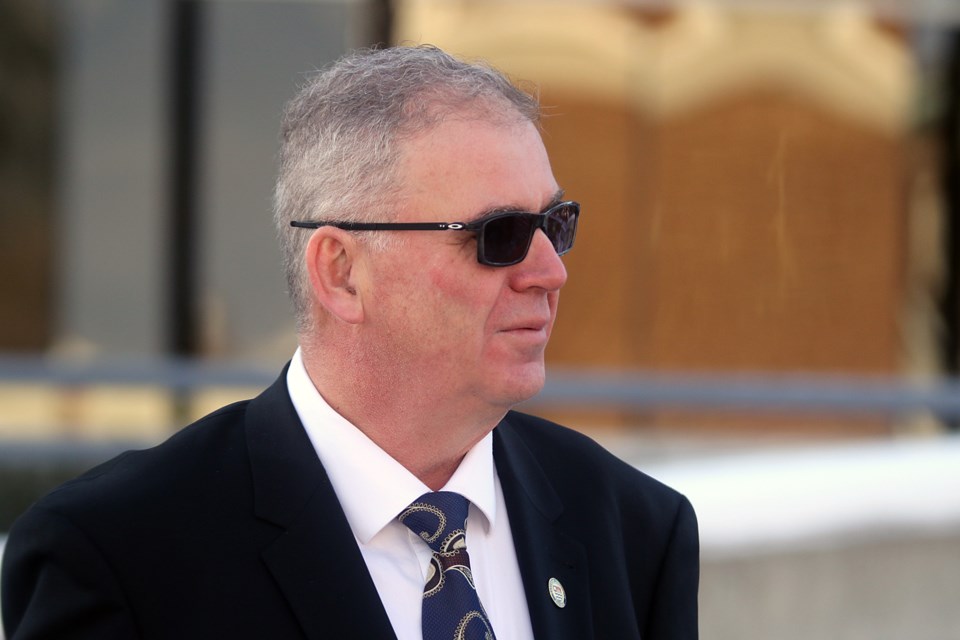THUNDER BAY – A proposed municipal budget released by city administration Tuesday would see Thunder Bay's tax levy hiked by two per cent in 2021, after growth. The document also charts a course through millions in anticipated COVID-19 costs and badly-needed infrastructure spending.
City council directed administration to hold the tax levy increase to two per cent in August, a goal city manager Norm Gale said staff had met without any significant reductions to programs and services.
The document will be subject to weeks of debate and potential modifications at city hall, as well as consultation with the public, before council is expected to vote on approval on Feb. 8.
Administration’s proposed budget would see total tax-supported spending rise 3.2 per cent in 2021, reaching roughly $369 million.
About half of the increase comes from a proposed jump of more than 10 per cent in tax-supported capital spending, bringing that budget line to $51.6 million.
“We hear a lot about the infrastructure gap – we need to catch up to our infrastructure needs, and we are behind,” said Gale. “Council has determined they want to increase spending on infrastructure. This budget achieves that.”
Those capital funds would go largely to road, sidewalk, and bridge improvements ($18.9 million), fleet and equipment replacement ($5.4 million), improvements to parks, including a renewal of the greenhouse facilities adjacent to the botanical conservatory ($5 million), and transit improvements ($4.1 million).
Administration proposed a more modest 2 per cent increase to tax-supported operating spending, adding $6.3 million for a total of $317.3 million.
The budget would also see the municipal tax levy increase by 2 per cent, or 2.15 per cent before negligible growth of $300,000 anticipated in the city’s assessment base.
The city’s tax levy increase is only one factor in the increases individual homeowners will face, Gale emphasized. Others include property values as determined by the Municipal Property Assessment Corporation (MPAC) and the education tax rate
Major drivers of the levy increase include the boost to capital spending, a $1 million jump in insurance premiums, and an $800,000 increase to WSIB costs at Superior North EMS.
Those kinds of uncontrollable costs, and council’s directive to avoid service cuts, made it a challenge to constrain spending, Gale said.
“Budgeting is difficult every year,” he said. “Our costs increase more than our revenue every single year. So [it’s always] challenging to come in at a modest [tax] increase, while maintaining the same service levels and increasing capital spending.”
The ongoing COVID-19 pandemic presents additional challenges, with the city projecting an additional $8.7 million in costs for 2021. However, nearly half of that total will be covered by unspent relief funding received from provincial and federal governments in 2020.
The COVID-19 cost projection rests partly on an assumption that Thunder Bay would remain under Stage 3 restrictions that were in place in the fall – significantly less strict than the orange zone the district was moved into on Dec. 4, before the current two-week lockdown was implemented.
The city will aim to cover those COVID-19 costs without dipping into tax revenues, with administration suggesting remaining costs be drawn from COVID-19 relief funding from senior levels of government, and its own financial reserves.
About $4.2 million in pandemic support from the provincial and federal governments would be left over from 2020, the city anticipated, leaving the city to cover a projected $4.5 million in COVID-19 costs.
Administration suggested that total could be drawn from the city’s stabilization reserve, which is intended to cover unanticipated costs and allow the city to balance its budget, a provincial requirement. The fund currently stands at $12.3 million, said city treasurer Linda Evans.
Administration also presented 40 options to potentially reduce the impact on the stabilization reserve. It recommended implementing 28 of those, which would trim around $2 milllion.
While city councillor Mark Bentz praised administration for delivering a budget that met council's tax levy target without service reductions, he remains concerned about relying on the stabilization reserve to cover COVID-19 losses he said could range wildly from the city's projections.
“Yes, we do have quite a large stabilization reserve, which is a great thing," he said. "But our other reserves are being drawn down. If we also draw the stabilization reserve down – I mean, it’s easy to draw money out of a piggy bank, right?"
"The assumption is we'll be drawing from the stabilization reserve to... cover the COVID losses we’re guessing are going to happen. But these are only guesses, and these are very uncertain times in terms of budgeting... We don’t know these COVID-costs are one-time – they could go on for a number of years.”
An overall increase of approximately 36.8 full-time equivalent positions is caused by temporary pandemic hiring, Evans added.
“If we excluded the COVID impact of additional temporary pandemic workers, extra screeners and cleaners, we actually reflect a decrease [of 2.4] FTEs," she said.
Residents can access budget documents and submit feedback at the city's website.
